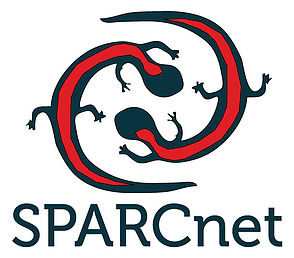One species, two species, red species, lead species? Phylogenetics and species concepts with Plethodon salamanders
Author(s): M. Caitlin Fisher-Reid
Bridgewater State University
2241 total view(s), 1874 download(s)
BLAST_Table_and_Phylogeny.docx(DOCX | 230 KB)
cinereus_combined.meg(MEG | 39 KB)
cinereus_mtDNA.meg(MEG | 19 KB)
cinereus_nuclear.meg(MEG | 20 KB)
Fisher-ReidandWiens2011.pdf(PDF | 530 KB)
Fisher-Reidetal2013.pdf(PDF | 604 KB)
Lab_6b_phylogenetics.doc(DOC | 32 KB)
Lab_6b_worksheet.doc(DOC | 28 KB)
wiensetal2006.pdf(PDF | 618 KB)
- License terms
Description
This lab uses a subset of the genus Plethodon to teach phylogenetic methods and interpretation based on species concepts. It includes all members of the "cinereus" clade, plus one species from each of the other eastern Plethodon clades as outgroups. The students are tasked with determining if the three P. cinereus individuals (from NY, VA, and NC) are monophyletic, suggesting they are a single species (following the genealogical or evolutionary species concepts). The sequence data comes from Wiens et al. 2006 (Evolution). Instructors may use the prepared alignment or, in advanced courses, have students go on to NCBI and BLAST the sequences themselves using accession numbers. This allows for additional instruction on how to build the alignment from raw sequence data. The data are also partitioned by DNA type (mitochondrial, nuclear, combined), which can be an additional point of discussion in advanced classes (see Fisher-Reid and Wiens 2011; BMC Evolutionary Biology). The free software MEGA works on both PCs and Macs, and is relatively stable for alignment viewing, aligning raw sequences using MUSCLE, and basic tree building. Files included: three MEGA alignments (mitochondrial, nuclear, combined), a lab protocol for class time, a lab worksheet for assessment, a document containing the BLAST accession numbers and an image of the phylogeny students will likely produce, and three relevant primary literature references.
Cite this work
Researchers should cite this work as follows:
- Fisher-Reid, M. C. (2017). One species, two species, red species, lead species? Phylogenetics and species concepts with Plethodon salamanders. SPARCnet: Educational Resources, QUBES Educational Resources. doi:10.25334/Q4N66K
